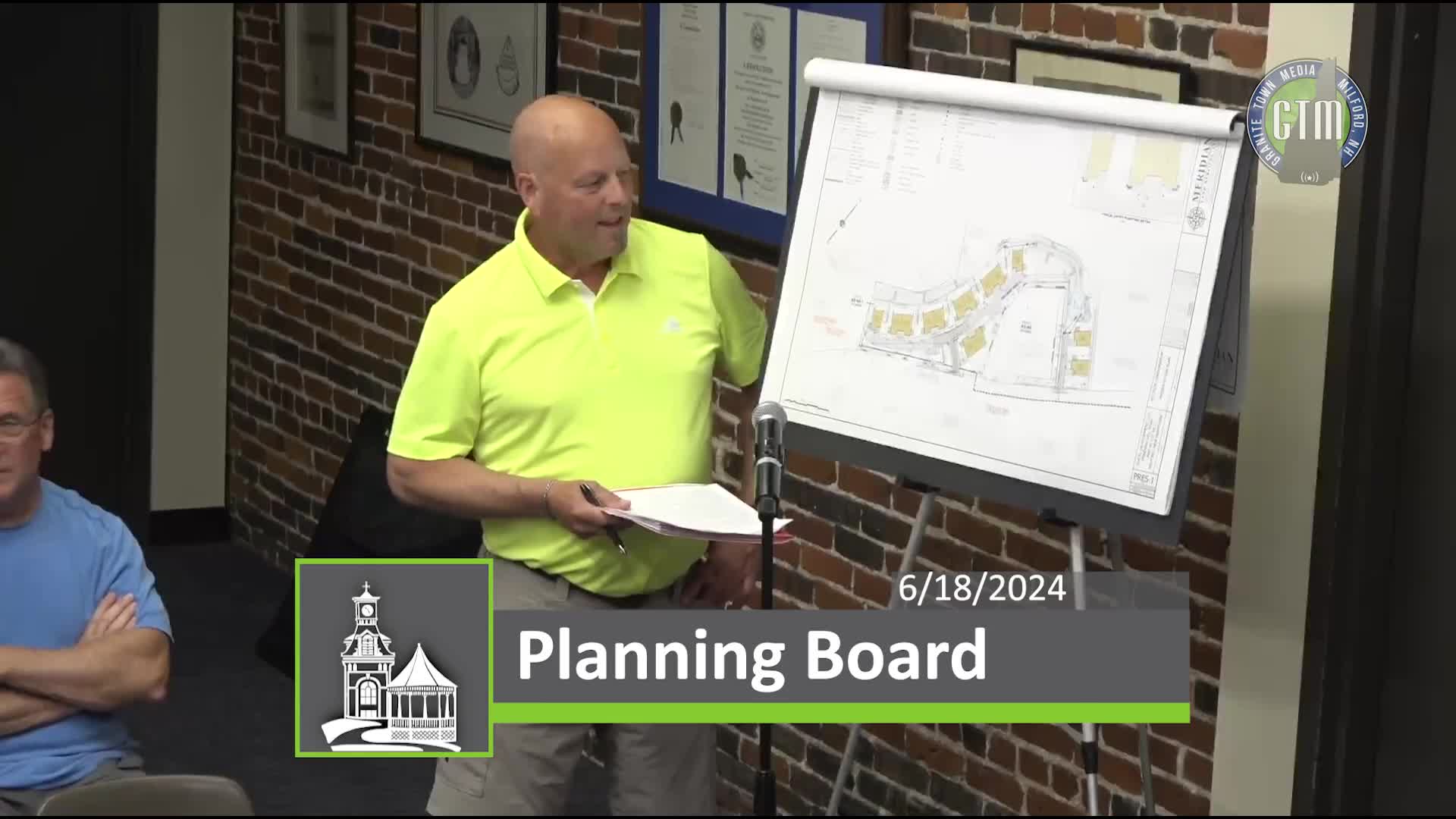Community Space Revamp Sparks Tree Buffer Controversy
June 18, 2024 | Milford Boards & Committees of Selectmen, Milford, Hillsborough County, New Hampshire

This article was created by AI summarizing key points discussed. AI makes mistakes, so for full details and context, please refer to the video of the full meeting. Please report any errors so we can fix them. Report an error »

During a recent government meeting, significant discussions took place regarding community space development and environmental concerns related to a proposed condominium project. The meeting highlighted plans for a community area that will include seating, garden pods, and picnic tables, aimed at fostering social interaction among residents.
A key point of contention arose from feedback provided by neighboring property owners, particularly the East Milford Cooperative. Concerns were raised about the health and maintenance of a tree line that serves as a buffer between the new units and existing homes. Several trees in this area were reported to be unhealthy, with some dead or dying, leading to dropped limbs and debris affecting neighboring properties.
In response to these concerns, the development team committed to enhancing the natural tree buffer. They proposed a plan to clean up the area by removing dead or dying trees and invasive species, including poison ivy, which has been problematic for the neighbors. The developers also agreed to implement a biannual maintenance schedule to ensure the buffer remains healthy and well-kept, a requirement that will be included in the condominium documents.
The meeting also addressed the need for clear documentation of these commitments. Participants discussed the possibility of creating a development agreement or a punch list that would outline the responsibilities and actions agreed upon during the meeting. This would serve as a formal record to ensure that both the developers and the abutters have a mutual understanding of the maintenance and landscaping plans.
Overall, the discussions underscored the importance of collaboration between developers and the community to address environmental concerns while promoting a cohesive living space. The commitment to maintaining the natural buffer and enhancing community areas reflects a proactive approach to community development and environmental stewardship.
A key point of contention arose from feedback provided by neighboring property owners, particularly the East Milford Cooperative. Concerns were raised about the health and maintenance of a tree line that serves as a buffer between the new units and existing homes. Several trees in this area were reported to be unhealthy, with some dead or dying, leading to dropped limbs and debris affecting neighboring properties.
In response to these concerns, the development team committed to enhancing the natural tree buffer. They proposed a plan to clean up the area by removing dead or dying trees and invasive species, including poison ivy, which has been problematic for the neighbors. The developers also agreed to implement a biannual maintenance schedule to ensure the buffer remains healthy and well-kept, a requirement that will be included in the condominium documents.
The meeting also addressed the need for clear documentation of these commitments. Participants discussed the possibility of creating a development agreement or a punch list that would outline the responsibilities and actions agreed upon during the meeting. This would serve as a formal record to ensure that both the developers and the abutters have a mutual understanding of the maintenance and landscaping plans.
Overall, the discussions underscored the importance of collaboration between developers and the community to address environmental concerns while promoting a cohesive living space. The commitment to maintaining the natural buffer and enhancing community areas reflects a proactive approach to community development and environmental stewardship.
View full meeting
This article is based on a recent meeting—watch the full video and explore the complete transcript for deeper insights into the discussion.
View full meeting
